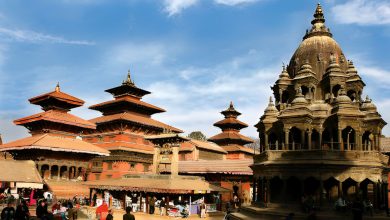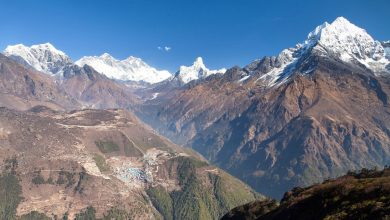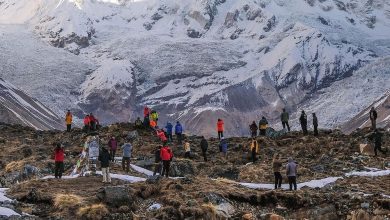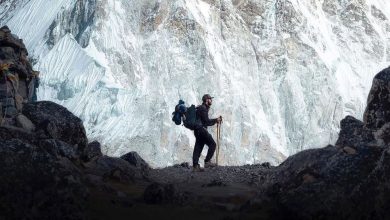Prominent Lakes Of Nepal: Country Adorned With Tapestry of 5300 Lakes
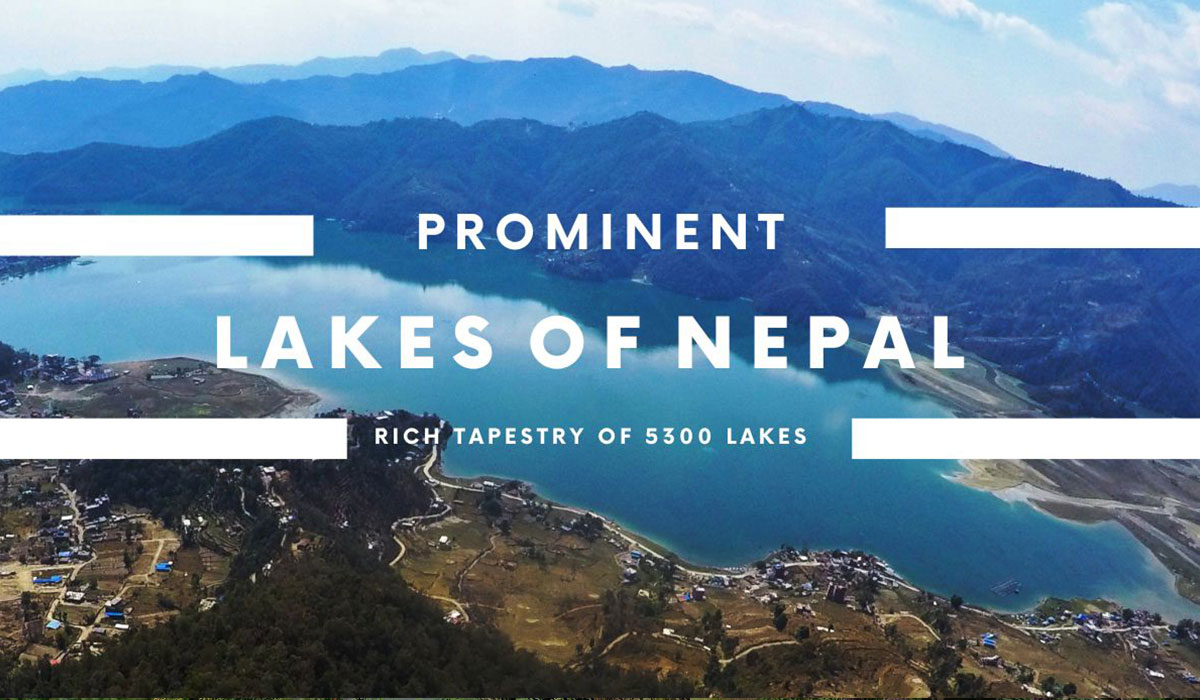
Nepal is a stunning country settled within the heart of Himalayas. Nepal boasts a different and breathtaking scene that incorporates a plenty of dazzling lakes. It is home to an incredible tapestry of 5300 lakes which are like precious jewels scattered across Nepal’s diverse landscapes.
These lakes contribute altogether to Nepal’s environment and culture in expansion to being stunning to look at. They provide water for cultivating and drinking, and they can even deliver power to light dwellings. Numerous of these lakes also have social and spiritual esteem, and both local people and sightseers appreciate their peaceful beauty. It is truly a blessing to be able to witness these lakes. Nepal’s lakes are diverse as the country itself is and there is beauty in that too.
It is to be mentioned that Tectonic and Glacial lakes are the most famous lakes of Nepal.
So,in this article, we will dive into prominent lakes of Nepal; their importance, types and differences.
Tectonic Lakes
Tectonic lakes really are a wonder of nature. These lakes are the kind of lakes that are formed by the extremely powerful forces under the Earth’s surface. These lakes are commonly found in the Himalayan region and they are originally formed by the extreme movement of large pieces of the Earth’s crust. These large pieces are commonly referred to as ‘tectonic plates’.
But it is to be understood that tectonic plates are not the only reason for the formation of such lakes, there are many geological processes happening under the surface of Earth, that too over centuries or even more.
The major speciality of tectonic lakes is that they are really deep, and the water inside of them are crystal clear.
Some of the prominent tectonic lakes in Nepal are as follows:
Rara Lake
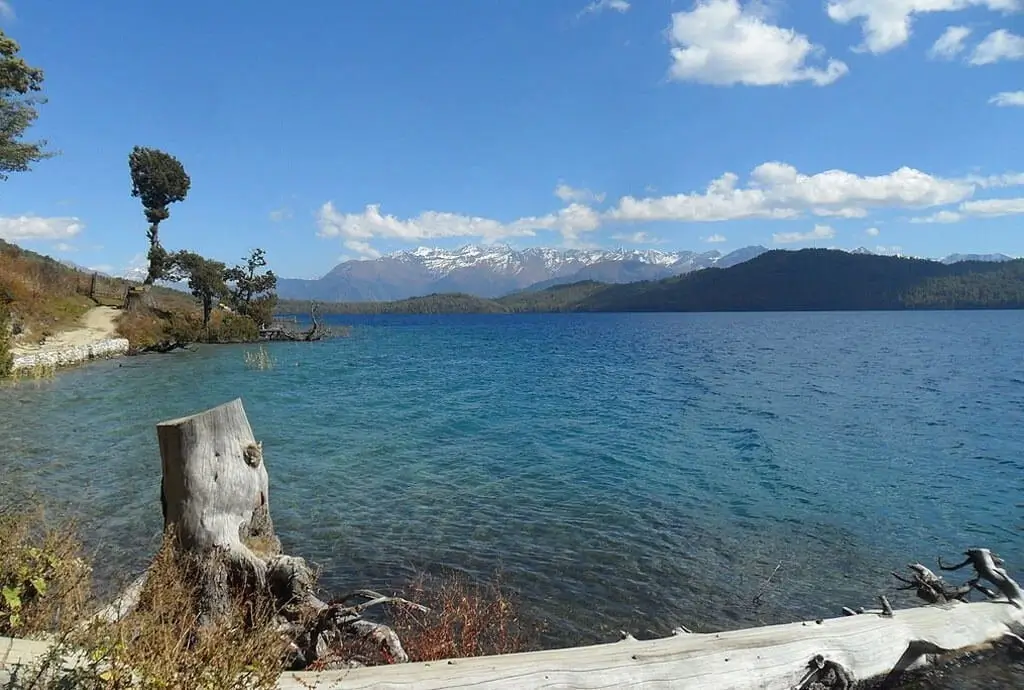
Location: Mugu district of Nepal
Average Depth: 100m (330 ft)
Maximum Depth: 167m (548 ft)
Length: 5.1km (3.2 mil)
Max Width: 2.7km (1.7 mil)
Area: 10.61 square kilometers (4.10 sq mil)
Rara Lake is one of the most beautiful lakes of Nepal. It is the biggest and deepest lake of Nepal surrounded by Rara National Park. Rara Lake is often referred to as the “Queen of Lakes” due to its amazing view and surroundings.
Talking about its geographical characteristics, Rara lake is situated at an elevation of approximately 2,990 meters (9,810 feet) above sea level. It reflects the high peaks and the lovely trees around it. The water is also very clear in Rara Lake.
Coming to its area, it lies at an area of about 10.61 square kilometers (4.10 square miles) and reaches a maximum depth of approximately 167 meters (548 feet).
There are only a few tectonic lakes in Nepal and Rara lake truly is the most prominent among them.It is not easily accessible by road, and most visitors reach the lake by trekking adventure. The ecstatic beauty of Rara Lake makes it worth it to travel through such an adventure.
Since Rara Lake is located in Rara National Park, various diverse birds and animals can be seen during the journey. Himalayan griffons, snowcocks, and animals like musk deer, red pandas are majorly found in the area and can be encountered.
Various communities are inhabited in the surrounding like the Thakuris and Rokkas. You can experience local culture and enjoy it there as well.
Rara Lake not only adds to the beauty of Nepal but also is a very interesting tourist place.
Shey-Phoksundo Lake
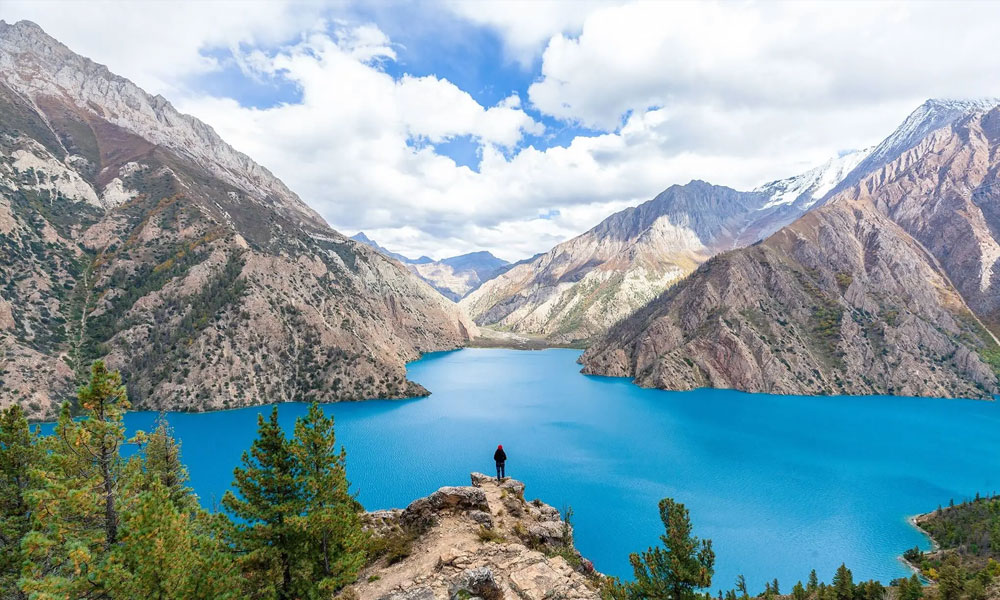
Location: Dolpa district of Nepal
Maximum Depth: 136.20 meters (446.9 feet)
Length: 5.64 kilometers (3.50 miles)
Maximum Width: 549. 89 – 975.24 meters (1,804.1-3,199.6 feet)
Water volume: 1.44 X 10^10 cubic feet
Area: 494 ha (4.85 kilometer square)
Shey Phoksundo Lake, also known as Phoksundo Lake is a gem located in Dolpa district of Nepal. It is a high-altitude lake which is mostly renowned for its amazing beauty and unique features.
Phoksundo Lake is situated at an elevation of 3,611.5 meters above the sea level which translates to 11,849 feet. It is undoubtedly one of the high lakes of Nepal. The dry, barren surroundings with its distinctive blue water creates a stunning contrast. Phoksundo Lake is 494 ha in size with water volume of 409,000,000 cubic meters, it has maximum depth of 136.20 meters.
Phoksundo Lake has been designated as Ramsar site as well. The lake is surrounded by rocky cliffs and high peaks which reflect in its clear waters, creating a beautiful view. It also has a lot of religious significance. There are more than 20 stupas in the surroundings where annual prayers and worship are carried out. You can see prayer flags waving due to wind and also little settlements with traditional wooden houses.
This lake is more intriguing because it has a unique ecology. The rare elusive blue sheep roams here freely and if you get lucky you could also spot a snow leopard here. This region is home to a lot of rare animals and plants, which makes it amazing for nature lovers and wildlife photographers.
Glacial Lakes
Glacial lakes are amazing natural formations brought about by the dynamic processes of glaciers sculpting the Earth’s landscapes. These lakes are the result of glaciers gradually melting, which releases water that gathers in gaps or basins made by glacial action.
Glacial lakes exist in a variety of sizes and may be found in mountainous areas all over the world, frequently tucked away within rocky terrain and surrounded by stunning beauty.
These lakes are distinguished by their clean turquoise waters, which owe their lovely hues to the little pieces of rock, known as glacial flour, that are transported by meltwater from the glaciers. Furthermore, glacial lakes are crucial to the ecology because they serve as freshwater sources for towns downriver and provide a home for rare aquatic animals.
It is not a surprise that Nepal is home to numerous glacial lakes. Nepal is a mountainous country giving home to the infamous Himalayas.
It is believed that there are more than 2324 glacial lakes in Nepal.
Nepal primarily has glacial lakes rather than tectonic lakes. Some of the most prominent glacial lakes in Nepal are as follows:
Tilicho Lake
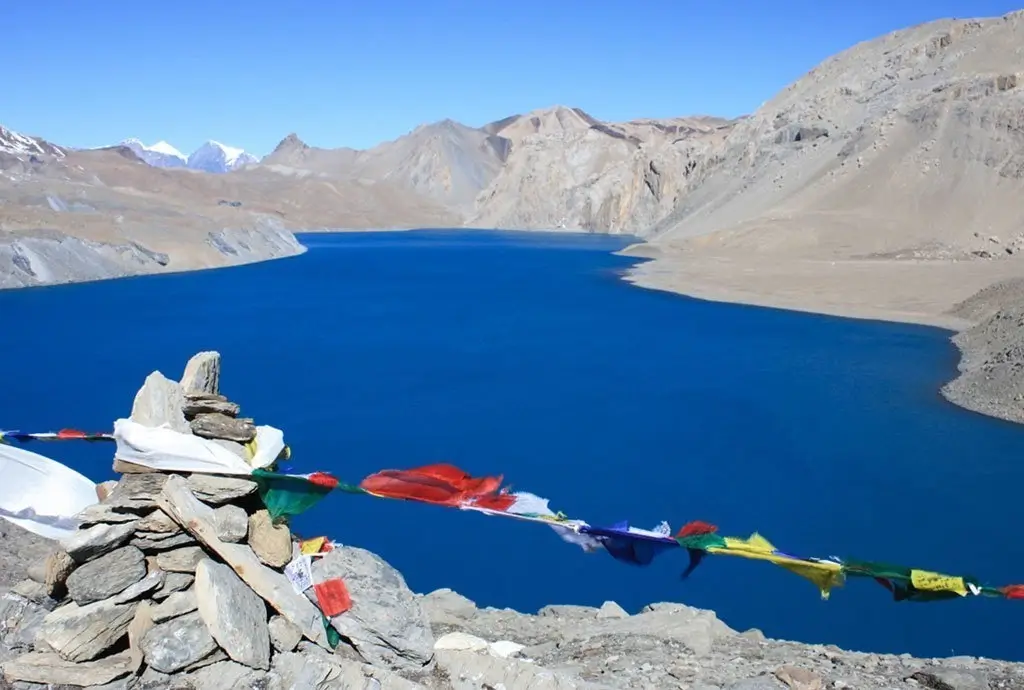
Location : Manang district of Nepal
Average Depth: Approx 85 meters ( 280 feet)
Maximum depth: Approx 85 meters ( 280 feet)
Length: Approx 4.8 square kilometers
Average Width: varies
Area: Approx 4.8 square kilometers
Tilicho lake is one of the most prominent lakes in Nepal. It is famous amongst domestic as well as international tourists for its captivating beauty and charm.
Let us talk about its geographical characteristics, Tilicho lakes is located at an impressive height that is approximately 4,919 meters above the sea level which translates to 16,138 feet high. It is undoubtedly true that Tilicho is one of the highest lakes in the entire world.
Talking about its location, it is homed by the Annapurna and Manaslu ranges of Nepal, particularly in the heart of Himalayas in the Manang district.
Tilicho is one of the few glacial lakes of Nepal that equates to it being formed as a result of melting and forming of huge glaciers over a long period of time.
The lake is not only high in altitude but it has impressive depth as well, It reaches depths more than 85 meters which translates to 280 feets. Its area spans over 4.8 square kilometers. For a lake situated that high, Tilicho lake’s expansion is really commendable.
Undoubtedly it is one of the most beautiful lakes not just in Nepal but in context to the rest of the world. The lake has scenic pristine blue coloured water that provides the dramatic beauty to the whole surrounding. It is a famous destination for trekkers and really a feast to eyes after the harsh trek of the rugged terrains of the region.
Not just trekkers, religious pilgrims have their own fair share of reasons why Tilicho is so famous. It is considered to be sacred not just by Hindus but also the Buddhist communities. Especially during the auspicious festival of Janai Purnima, many pilgrims visit the lake to perform holy rituals and prayers.
Gokyo Lake
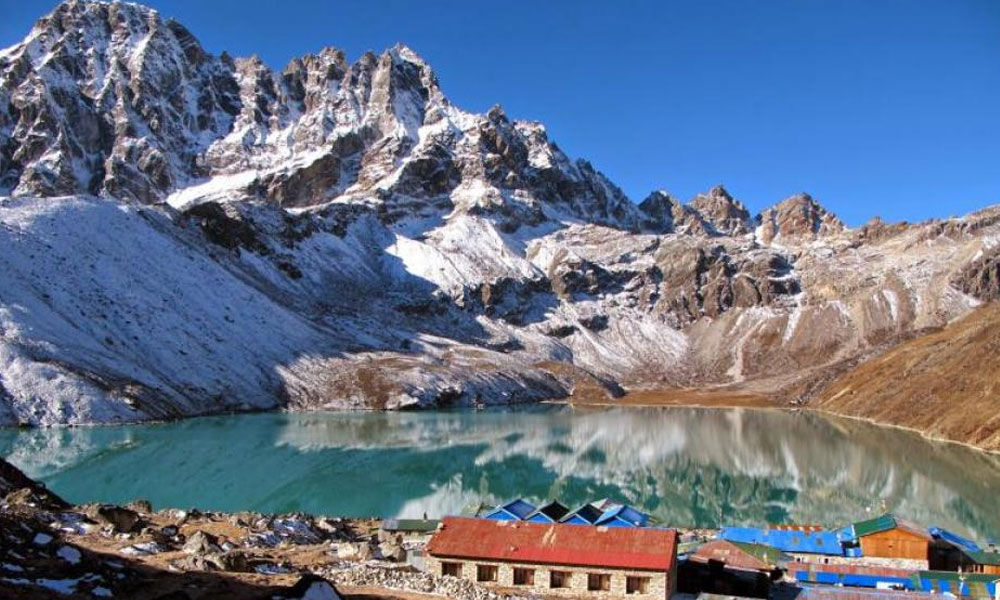
Location : Solukhumbu district of Nepal
Average Depth: Approx 55 meters(80 feet)
Maximum depth: Approx 270 meters( 890 feet)
Length: Approx 3,45 kilometers (2.14 miles)
Average Width: Approx 0.5 kilometers (0.31 miles)
Area: Approx 1.537 square kilometers (0.593 square miles)
Water volume in the lake: Approx 85.94 million cubic meters
Gokyo lake is one of the most prominent lakes in Nepal. It is famous amongst domestic as well as international tourists for its captivating beauty and charm.
The Gokyo lake is locally also referred to as Gokyo Cho or Dudh Pokhari. It is one of the most beautiful lakes of Nepal which is located in an impressive high altitude glacial lake system.
Talking about the geographics of the Gokyo lake, It is situated in the Solukhumbu District of Nepal. It falls in the territory of the infamous Sagarmatha National park and a huge part of the EBC circuit trek.
The Gokyo Lake is really high, it is situated at a commendable height of approx 4790 meters which translates to an impressive 15,715 feets above sea level. This makes Gokyo one of the highest lakes not just in Nepal but all over Asia.
It is beautifully seated in the heart of the Himalayas close to the famous peaks including the tallest Mount Everest and other very high peaks Lhotse and Cho Oyu.
It is unknown to many that this lake system actually is composed of six main lakes and Gokyo is the largest of them all as it covers a huge surface area.
The lake is famous for its beautiful turquoise coloured water which adds to the majestic and dramatic looks that it provides. The depth of this lake reaches up to approx 43 meters which is 141 in feets.
As mentioned earlier, Gokyo lake is a part of the Sagarmatha National Park which makes it a part of a UNESCO world heritage site. The Gokyo lake is a home to an array of wildlifes like Himalayan Tahr, musk deers and other various beautiful bird species.
The area is surrounded by friendly Sherpas.
Oxbow Lakes
Oxbow lakes are unique types of lakes having unique features and are found in many riverine landscapes around the world. They are crescent-shaped water bodies which have intriguing origins.
These lakes have captured the curiosity of scientists and nature lovers for a long time. Oxbow lakes are formed when a river bends so much that it cuts a new, shorter path, leaving behind a U-shaped or horseshoe-shaped lake. This happens because the river changes its course over time.
Some of the oxbow lakes in Nepal are as follows:
Bishazari lake
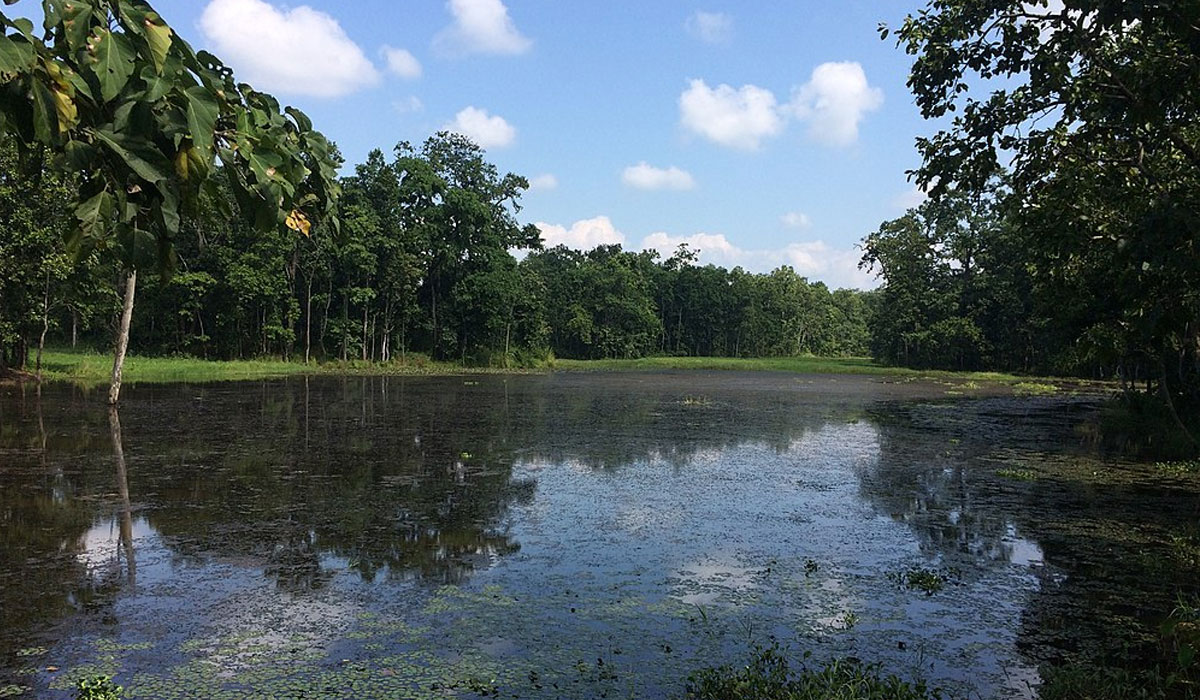
Location: Chitwan district of Nepal
Area: 3,200 ha (7,900 acres)
Surface Elevation: 286 meters (938 feet)
Bishazari Lake also known as Bishazari tal is an oboe lake system situated in Chitwan district of Nepal in the buffer zone of Chitwan National Park.
This lake covers an area of 3,200 ha and is situated at an altitude of 286 meters between the Mahabharat mountain range to the north and the Siwalik range to the south. Contrary to its name Bishazari ( which means 20,000 in Nepali), there aren’t actually 20,000 lakes, rather it is one whole oxbow system. There are many lakes around the system and its counting is large so the lake is called the Bishazari Tal. The lakes are very pretty and are a part of an intriguing process.
Bishazari lake has been also designated as a Ramsar site. It is of great importance to wildlife and nature. It is a biodiversity rich area and serves as a water hole and corridor for endangered and rare wild animals.
The lake is heaven for bird enthusiasts as every year birds from the north pole move to the place. It is home to a variety of bird species.
The surrounding in this system is inhabited by 10000 people who are warm and welcoming. This lake is a feast for those who want to witness the beauty of nature and its charm.
Ghodaghodi Lake
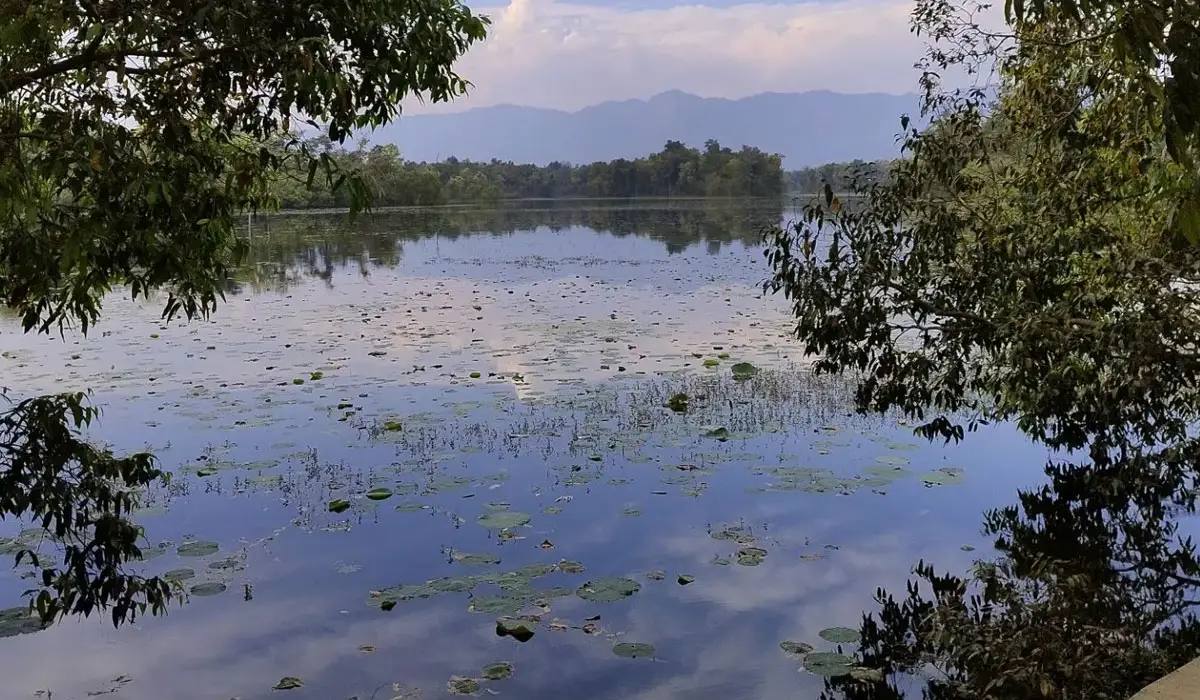
Location: Kailali district of Nepal
Maximum Length: 1.83 kilometers (1.14 miles)
Surface Area: 2,563 ha(6,330 acres)
Average depth: 4 meters (13 ft)
Surface elevation: 205 meters (673 ft)
Ghodaghodi lake, also known as Ghodaghodi Tal is a beautiful lake located in the Kailali district of Nepal. It is renowned for its natural marvel and ecological importance.
The word Ghodaghodi means male and female horses, and legend has it that Lord Shiva and his consort Parvati used to circle this lake after being cursed by a hermit.
Talking about its geographical features, the lake is expansive, covering an area of 2,564 (6,330 acres) and is situated at an elevation of 205 meters on the lower slopes of the Siwalik Hills.
It is a Ramsar site and also a bird sanctuary. Ghodaghodi lake consists of a large oxbow system and is surrounded by many forests and some streams.
The lake is a home to many endangered species and plants, creating a happy place for diverse wildlife. It also holds cultural and religious significance. The local Tharu’s believe the lake to be sacred and celebrate festivals and rituals at the lake’s edge.
Various activities like boating, wildlife sightseeing and walks can be done in the surrounding area while enjoying the view and embracing the nature in this place. Not only is it a place of ecological importance but also religious and cultural importance of the people.
Man-made Lakes
Man-made lakes often known as artificial lakes, are water bodies created by humans for their own use, such as water supply , irrigation, flood control, hydropower generation, and recreation.
These lakes are made by modifying ongoing flow of rivers or damming streams in specific locations. Such lakes require great maintenance and safety.
Man-made lakes are essential for fulfilling general human purposes and providing a source of water that can help in betterment of nature as well. These lakes create huge environmental and social impacts. Supporting human activities and shaping landscapes all over the world, these lakes are a result of man’s work. While they do have many benefits, proper management is a must.
Some of the prominent man-made lakes of Nepal are as follows:
Bharat Lake
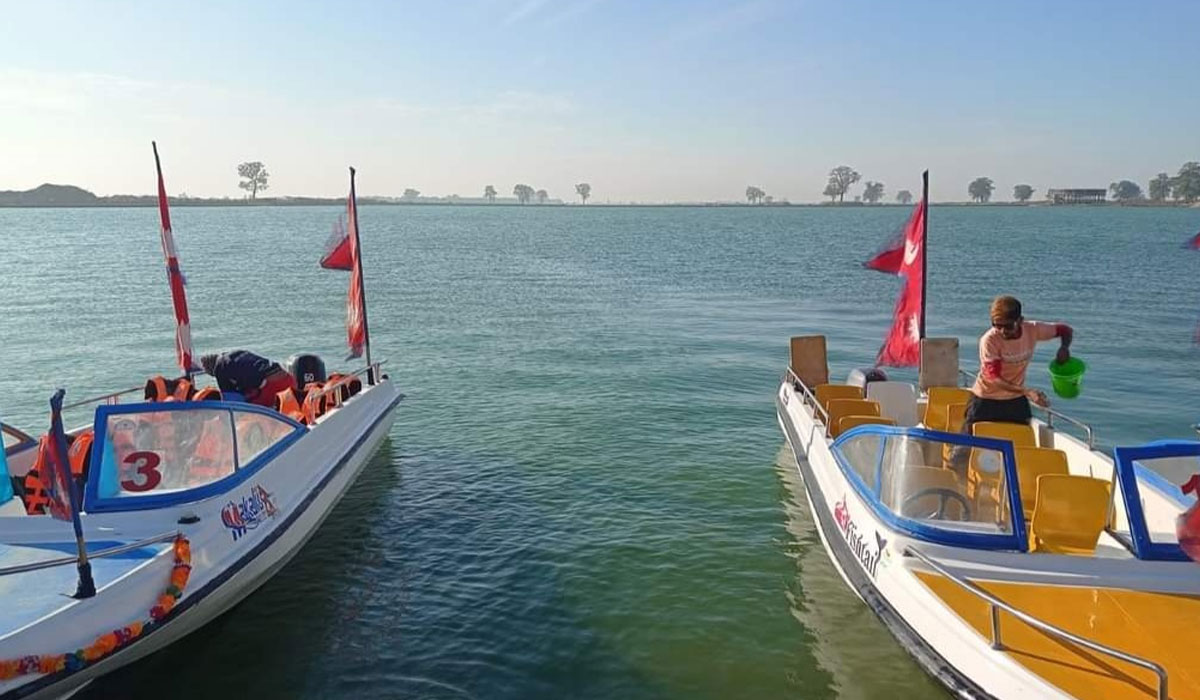
Location: Sarlahi District of Nepal
Area: 30 ha (300,000 square meters)
Maximum Depth: 35 feet (11 meters)
Bharat Lake also known as Bharat Tal is the second largest man made lake in Nepal. It is located in Madhesh Province of Sarlahi district.This lake was named after Bharat Kumar Thapa, a mayor of Bagmati Municipality.
It covers an area of more than 35 hectares, and is 35 feet deep. Bharat Lake is well renowned and includes many tourist attractions and activities such as motorboat and jet boat rides. This lake is not only attracting domestic tourists but also tourists from India.
There is also a park being constructed around the lake.
Bharat lake was a dream come true for Bagmati Municipality to make an excellent lake that promotes the place and the people. It is a beautiful man made lake that serves well for its purpose. Due to social media the popularity of this place is increasing day by day.
Indra Sarovar Lake
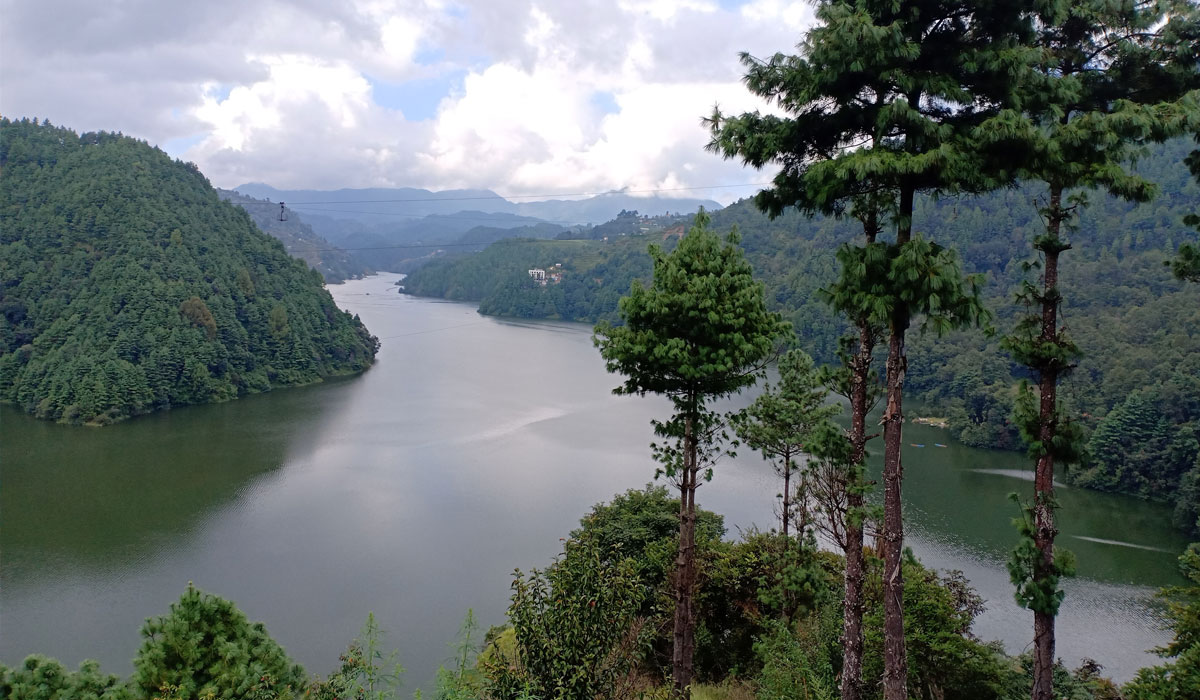
Location: Makwanpur District of Nepal
Maximum height: 114 meters (374 ft)
Water capacity: 85,300,000 cubic meters
Length: 7 kilometers
Indra Sarovar Lake is the biggest man made lake of Nepal. It has stunning views and is popularly known as the Kulekhani dam.
The lake is not natural but it doesn’t fail to give that natural look and leave people stunned with the views. It was made as a reservoir to generate hydroelectricity. The lake and power generating plants have been steadily producing electricity for years.
Situated in a unique location, the lake and its surroundings look almost surreal, especially for a thing that was created for utility. And becoming one of the favorite tourist destinations among the people, the lake has been providing an economic boost to locals and offering a different utility to them.
Indra Sarovar is a great hiking destination as well. It is also popular for fish farming. This lake, although made by humans, has served as a great resource for the growth of the place while providing an essence of natural beauty.
Nepal has some of the most amazing lakes that one could ever witness, there’s a mix of everything. Such lakes are of great importance and have been contributing to the nation’s growth for a long time.
You may also like:
